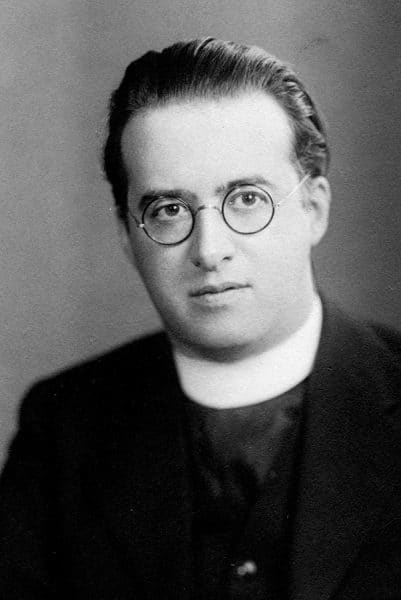
Georges Lemaître
Georges Henri Joseph Édouard Lemaître (July 17, 1894 to June 20, 1966) Lemaître was a Belgian priest, theoretical physicist and mathematician who proposed the Big Bang theory, which is the central pillar of modern cosmology. Einstein discovered his theory of gravity (called General Relativity) in 1915. In 1922 a Russian mathematician Alexander Friedmann, and a few years later Georges Lemaître independently, found solutions to Einstein’s gravitational field equations that described a universe in which space itself is expanding. (The “metric tensor” that describes this is now called the “Friedmann-Lemaître-Robertson-Walker metric” or “FLRW metric.”) Meanwhile, the astronomer Slipher found evidence that galaxies were flying apart from each other at tremendous speeds. It was Lemaître who combined these observations with the mathematics of General Relativity to propose, in 1927, that the universe is indeed expanding. He also predicted from this hypothesis that the rate at which remote galaxies are receding from the earth should be proportional to their distance away. Few knew of Lemaître’s prediction at the time, so that when the astronomer Edwin Hubble discovered this relationship from observations in 1929 it came to be called the “Hubble Law” of cosmic expansion. In 2018, an overwhelming vote by the membership of the International Astronomical Union recommended that it be renamed the “Hubble-Lemaître Law.” In 1930, Lemaître suggested that the expansion of the universe began from a state of enormous density, which he called “the Primeval Atom” and which is now called “the Big Bang.” Lemaître’s thinking about cosmology was astonishingly prescient in several other ways. (a) He predicted that there should be observable radiation left over from the Big Bang explosion, which is correct, though he incorrectly identified it with Cosmic Rays. Rather, the remnant radiation, called the “cosmic background radiation,” is mostly in the form of light, which has by now been redshifted by the cosmic expansion to the microwave part of the electromagnetic spectrum. This cosmic microwave radiation was discovered by Arno Penzias and Robert W. Wilson in 1964, for which they were awarded the Nobel Prize in Physics. (b) Lemaître suggested that quantum effects should be of great importance at the time of the Big Bang, which is also now believed to be correct. In particular, he speculated that the matter and radiation that filled the universe after the Big Bang came from the quantum mechanical decay of the Primeval Atom. It turns out that according to current theory something similar to this did happen. Right after the Big Bang, the universe is believed to have undergone an extremely brief period of fantastically rapid expansion called “cosmic inflation,” driven by energy trapped in an “inflaton field.” This cosmic inflation ended when the inflaton field quantum mechanically decayed into ordinary matter and radiation. And (c) in order to accommodate a realistic age of the universe, Lemaître proposed a model in which the universe underwent many hundreds of millions of years of decelerating expansion, followed by a comparably long period during which the expansion has been accelerating due to the “cosmological constant” (a term in Einstein’s equations of gravity). For decades, it was thought that the cosmological constant is zero or has negligible effects and that the universe has been expanding in a decelerating way since moments after the Big Bang. But in 1998, to everyone’s surprise, it was discovered that the universe’s expansion has indeed been accelerating for the last several billion years due to the effect of so-called “dark energy,” which is thought most likely to be the cosmological constant. So, not only did Lemaître propose the central idea of modern cosmology, the Big Bang theory, but his further speculations also brilliantly anticipated several ideas that have become major parts of contemporary thinking in cosmology.
Lemaître was opposed to linking particular scientific theories, including the Big Bang theory, to theological ideas, as each field must respect its own methods and competences. (For more details of Fr. Lemaître’s scientific biography and scientific contributions see this article on the SCS website. For an interesting 1933 interview with Fr. Lemaître himself, see this New York Times article reprinted on the SCS website.)
Explore Other Scientists
It is our hope that this curated set of biographies will be useful to teachers, students, and the general public.